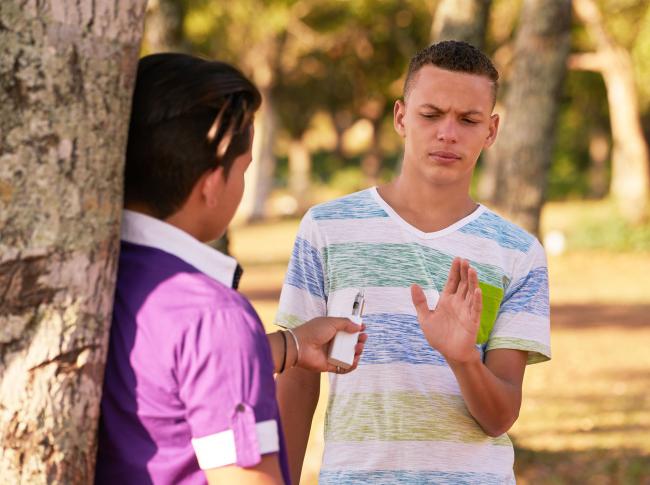Smoking cessation pill may help youth quit vaping
May 6, 2025
Smoking cessation pill may help youth quit vaping
At a Glance
- Teens and young adults who took a smoking cessation drug called varenicline were more likely to quit vaping nicotine than those who got a placebo pill.
- The results suggest that this existing treatment for nicotine addiction could help combat e-cigarette use among young people.

About 1 in 4 young adults between the ages of 18 and 25 regularly use e-cigarettes to vape nicotine, as well as 7% of U.S. high school students. The growing popularity of vaping has reversed earlier progress in curbing nicotine addiction, which primes young brains for other forms of substance use and comes with its own health risks. While many young people who vape say they want to quit or cut back, studies hadn’t tested treatments that might help them succeed.
NIH-funded researchers led by Dr. A. Eden Evins at Massachusetts General Hospital wanted to know if an FDA-approved smoking cessation drug called varenicline could help youth quit nicotine vaping. The drug, which is approved for smoking cessation in adults, works by blocking some effects of nicotine in the brain. As a result, it can ease quitting by both reducing craving and making nicotine less enjoyable. Earlier studies have shown mixed results for the medication in helping youth who want to stop smoking.
To test its use for vaping, the researchers enrolled 261 participants who ranged in age from 16 to 25, with an average age of about 21. The participants reported nicotine vaping almost daily with no history of regular tobacco smoking. Trial results appeared in JAMA on April 23, 2025.
Participants were randomly assigned to one of three groups. All got referred to an intervention called This is Quitting, a free text messaging-based program to encourage vaping cessation. In addition, two groups received 20-minute, remote weekly sessions with a young, nonprofessional counselor trained to help youth stop vaping. One of these two groups took varenicline twice a day while the other took an inactive placebo pill.
After 12 weeks, 51% of those taking varenicline had stopped vaping. Only 14% of those taking the placebo pill and just 6% of those who received only a referral for text-based support stopped vaping. By six months, 28% of those who took varenicline still weren’t vaping compared to 7% of those who took the placebo and 4% of those in the text-only group.
The researchers found that varenicline was well tolerated, causing no serious side effects. Only three participants dropped out of the study due to adverse events—two taking varenicline and one taking the placebo. Importantly, study participants who quit vaping didn’t replace their vaping with smoking tobacco.
More long-term study is needed, including in young people who vape and smoke tobacco and in younger teens who vape nicotine. But the findings suggest that varenicline could help to address nicotine use and vaping among teens and young adults. Because varenicline is approved for smoking cessation, doctors can and do already prescribe it to children and teens.
“Vaping is extremely popular among kids, and we know that this early nicotine exposure can make drugs like cocaine more addictive down the line, yet ours is the first treatment study to look at this vulnerable population,” Evins says. “We wanted to help teens and young adults quit, and we found that prescribing varenicline is the best way to do that.”
—by Kendall K. Morgan, Ph.D.
Related Links
- E-cigarettes May Complicate Teen Attempts to Quit Nicotine
- Vaping Alters Mouth Microbes
- E-cigarette Use May Lead Some to Quit Traditional Cigarettes
- E-cigarettes May Affect Teen Tobacco Use
- Tobacco/Nicotine and Vaping
- Vaping Devices (Electronic Cigarettes) DrugFacts
References
Varenicline for Youth Nicotine Vaping Cessation: A Randomized Clinical Trial. Evins AE, Cather C, Reeder HT, Evohr B, Potter K, Pachas GN, Gray KM, Levy S, Rigotti NA, Iroegbulem V, Dufour J, Casottana K, Costello MA, Gilman JM, Schuster RM.. JAMA. 2025 Apr 23:e253810. doi: 10.1001/jama.2025.3810. Epub ahead of print. PMID: 40266580.
Funding
NIH’s National Institute on Drug Abuse (NIDA).


